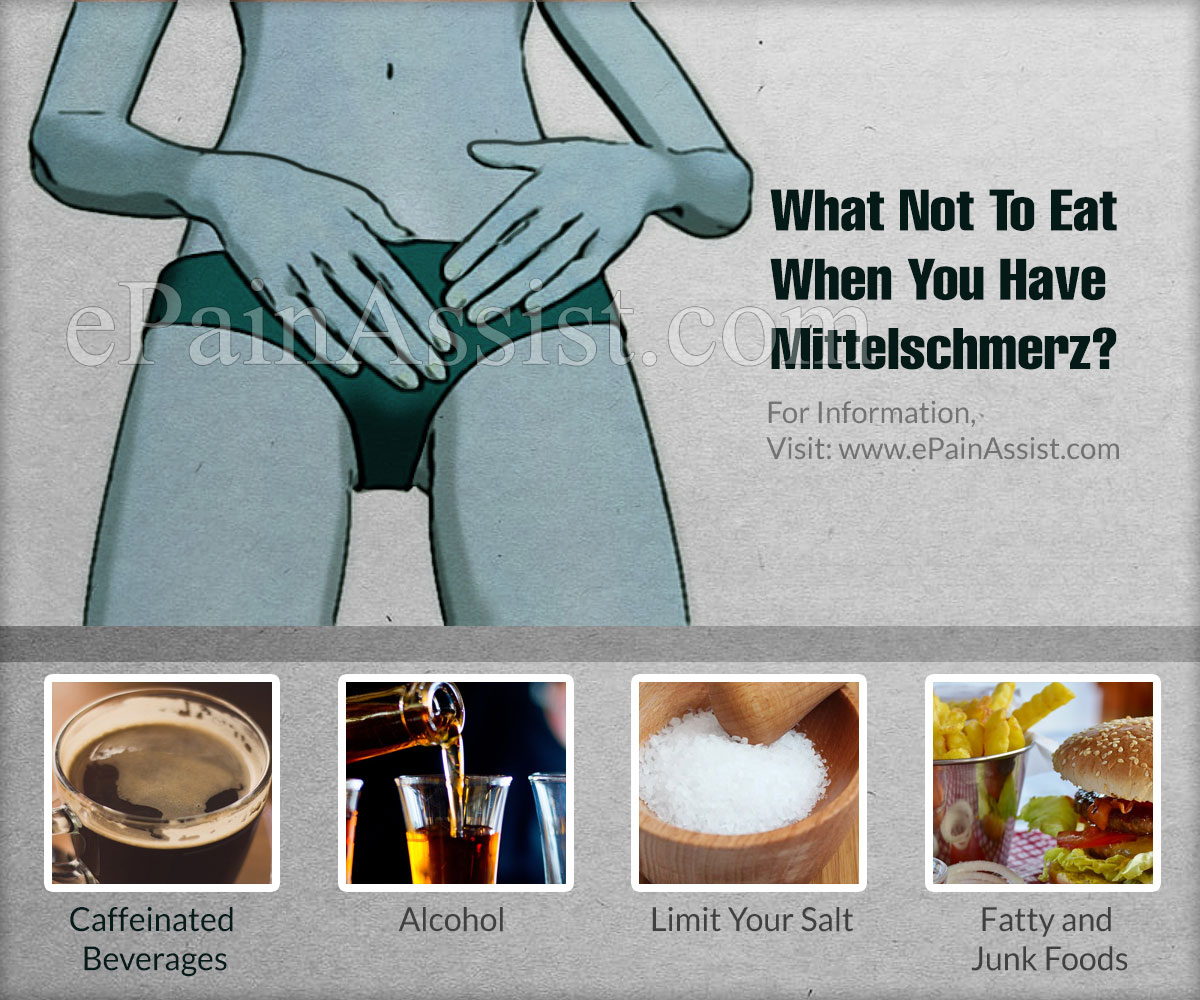Mittelschmerz refers to lower abdominal and pelvic pain, which few women experience at the time of their ovulation and it often takes place about midway between the two different menstrual cycles. Ovulation pain may range from a mild twinge feeling to severe level of discomfort. Furthermore, the pain often lasts from a few minutes to about many hours. One can feel the pain at a particular side of her pelvis or abdomen and varies every month depending primarily on whether the left or the right ovary releases an egg during a specific cycle. Along with this, women may experience vaginal discharge or vaginal bleeding in small amounts. However, if the pain becomes severe, women may even feel nausea, fever and vomiting.

What Not To Eat When You Have Mittelschmerz?
Gynecologists and nutritionists often recommend women to avoid the mentioned food items and/or beverages from their daily diet to overcome with ovulation pain or to manage the Mittelschmerz condition.
Strictly Avoid Caffeinated Beverages. One of the best ways to deal with your Mittelschmerz or ovulation pain is to strictly avoid or at least put a limit on various caffeinated beverages. These include soda or soft drinks, tea and coffee, as caffeine makes menstrual cramps than before. Moreover, coffee, tea and soda items make the blood vessels of any woman experiencing Mittelschmerz constrict. Especially, caffeinated drinks make the vessels responsible to feed the woman’s uterus tighter as compared to non-caffeinated drinkers. Especially, if you are a die-hard fan of coffee, you should try avoiding it or switch to green coffee prior to one week before the beginning of your period.
Stay Away or Limit the Alcohol Intake. Similar to caffeinated drinks, it is essential for you to stay away or limit the alcohol intake when you have Mittelschmerz. This is because; alcohol is also responsible to intensity menstrual cramps. Besides this, alcohol intake affects the hormone levels in one body. Along with this, most of the studies have showed that excessive alcoholic intake leads to increase in testosterone levels, estrogen levels and the luteinizing hormones.
Limit Your Salt Intake. Other than the restrictions related to alcohol intake and caffeinated drinks, it is essential for you to limit your salt intake during Mittelschmerz. This is because; consumption of salt in excessive amount causes the body to hold relatively more amount of water to make you feel bloated. You should keep in mind that bloating makes your condition of menstrual cramps worse.
Say To No To Fatty and Junk Foods. Both junk foods and fatty foods cause bloating and increase the level of your Mittelschmerz or ovulation pain. Because of this, it is essential for you to avoid junk and fatty food items, while switch to green veggies and fruits to include in your diet.
Causes Of Mittelschmerz
Whenever an egg develops in your ovary, follicular fluid surrounds it. At the time of ovulation, both the fluid and the egg with some amounts of blood released from the respective ovary. Even though doctors are unaware about the exact cause of the pain, they perceive that blood or fluid may irritate the abdominal cavity lining to cause pain. However, the pain often goes away once the body of a woman absorbs the blood or fluid and the egg releases from the ovary.
Symptoms And Key Aspects Of Mittelschmerz
Pain associated with Mittelschmerz often lasts for few minutes to up to few hours. However, in some cases, it may even continue for one or two day period. Common symptoms include-
- Pain at a particular side of the lower abdomen
- Cramp-like and dull pain
- Sudden and sharp pain
- Pain accompanied by mild vaginal discharge or vaginal bleeding
Conclusion
To conclude, we should say that by avoiding few of the foods, as mentioned here, you will expect to improve your condition and manage your ovulation pain or Mittelschmerz condition (if it does not reaches to severe level) in simple and easy way.
Also Read:
